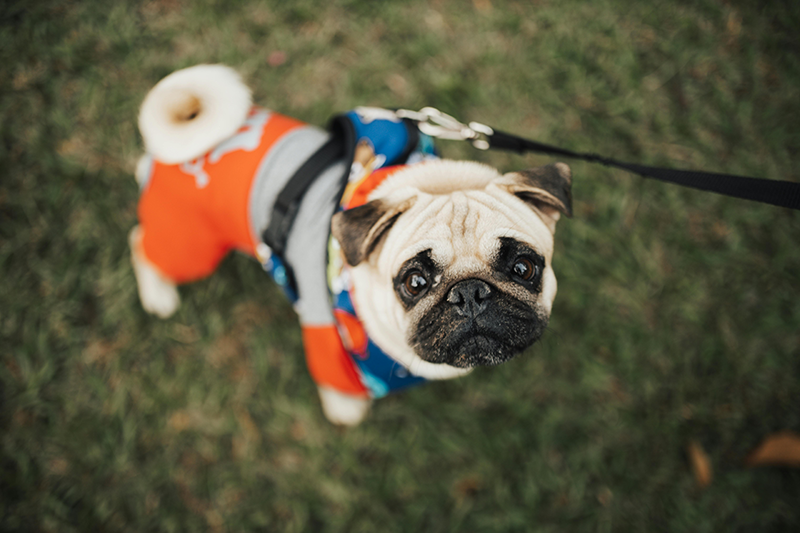Dog Anxiety Awareness Week
April 24, 2025
Keep Calm and Canine On
The first full week of May recognizes Dog Anxiety Awareness Week. Like humans, dogs can also suffer from anxiety. To promote awareness, we’ll discuss the kinds of anxiety that dogs feel, the symptoms you may notice and how to help an anxious pup.
Types of Anxiety in Dogs
Anxiety typically has a specific cause in dogs– and the cause can be unique to each dog. A Finnish study of over 13,000 dogs found that 73% of them had at least one behavioral problem linked to anxiety. The American Kennel Club identifies these three common types:
- Fear-related anxiety
- Separation anxiety
- Aging-related anxiety
Dogs can develop a fear of anything. If they associate an item, sound, person or animal with negative outcomes, they will become afraid of it. This fear can turn into aggression or other debilitating behavioral results.
Dogs with separation anxiety are unable to calm and comfort themselves when left alone. These dogs can become destructive to themselves and their surroundings.
Some older dogs develop anxiety as they age. It could be that the dog’s mental capacities deteriorate, leading to confusion.
Symptoms of Stress & Anxiety in Dogs
PetMD shares a comprehensive list of stress symptoms, including:
- Pacing
- Shaking
- Panting
- Rapid heart rate
- Frequent yawning
- Drooling with lip licking or smacking
- Excessive behaviors, like licking, barking or chewing
- Dilated pupils with rapid blinking
- On-the-alert behavior
- Hiding
- Bathroom accidents
- Refusal to eat
- Unhealthy shedding
Sometimes, a dog’s behavioral anxiety symptoms develop gradually. They can be easy to miss and you may think, “That’s just how my dog is.” But knowing the many symptoms of stress and anxiety can help you take steps to help your dog lead a calmer, more confident life.

How to Help Your Dog with Stress & Anxiety
A dog’s anxiety is often the result of building bad habits over time (compared with a single bad experience that sticks with a dog for life). Training, counterconditioning, and desensitization are all proven methods for treating stress and anxiety, no matter the cause. It’s good to seek professional training help. Check out our article “National Train Your Dog Month” for local resources.
It’s also possible to change your dog’s environment to avoid stress triggers. For instance, if your dog is anxious around strangers, don’t take them to crowded places.
Training and environment management may not be enough to help some anxious dogs. There are a few anti-anxiety veterinary medications on the market that could help. Contact us if you’d like to start a conversation with your veterinarian about your dog’s anxiety.
Read More

